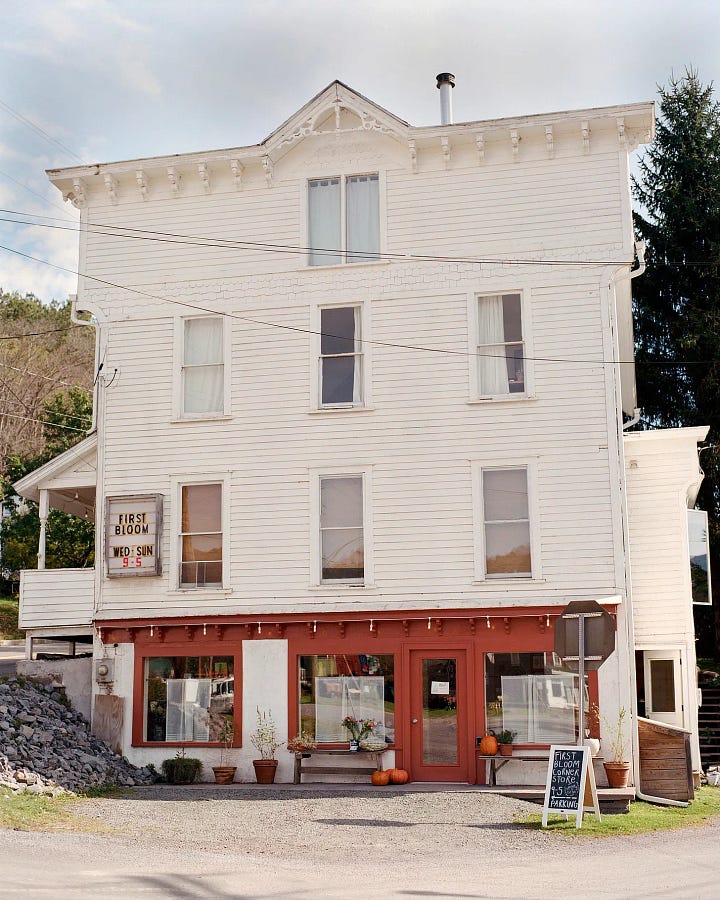

I was reading a post on Substack when I found out (a year late) that Alison Roman had opened a general store in the Catskills. For those of you who have never heard of Roman, she is one of those recipe writers turned food influencers whose #thecookies once broke the internet and still maintains a 5.0 rating after nearly 14,000 reviews. Roman’s decision to launch her first retail endeavor outside the city made a certain kind of sense - yuppies, which once stood for “young urban professionals” are increasingly moving away from urban places to small towns, resort communities, and going rural.
Small communities like the towns that dot the Catskills have seen much growth over the past five years. According to University of Virginia researcher Hamilton Lombard:
Since 2020, two-thirds of growth in the 25 to 44 population has occurred in metro areas with fewer than one million residents or in rural counties, a stark contrast to the last decade, when 90 percent of this growth was concentrated in the largest metro areas with over four million residents.
And newcomers to these areas are often more affluent than old timers, as seen by rising housing prices, and in some cases, genuine income growth.
Just as younger adults have increasingly migrated to rural counties with high natural amenities, the incomes of new residents in these areas have risen sharply since the pandemic. IRS data from 2021 and 2022 shows that in counties with the highest natural amenity scores, incomes of new residents have grown three times faster than the national average since 2018 and 2019.
Why is this happening? Housing prices explain part of it. Cities that once attracted upwardly mobile professionals have become too expensive even for yuppies themselves to live in.
And COVID gave small towns near big cities a boost. Many affluent people in dense cities escaped to places like upstate New York, Cascadia, coastal New England, and rural Virginia during the pandemic, liked it, and never returned.
Yuppies are also a demographic most likely to have remote work jobs and can take their big city salaries, networks, and real estate profits to a much less expensive community. This lifestyle arbitrage has significant downsides for the people already living in these small towns.
Why should we care? We are soon entering a period of zero-sum population moves, where each locale’s gain is another place’s loss, and these moves have consequences for many of the great cities of the 20th century. But we may also be witnessing the decline of one of the most recognizable demographic trends of the past 50 years – the alliance between yuppies and cities.
recently wrote about the important societal distinction between the middle class and the striver class in understanding the United States. And though he doesn’t explicitly say it, he implied the middle class lives in the suburbs and the striver class lives in cities:Being middle class is about building a life. It's primarily about the material elements of the American Dream: a house with a backyard for grilling in a nice neighborhood, a car, family vacations, retirement savings, a social life with friends and neighbors and people from church, children who are able to build a life with even better material success.
Being striver class is about the desire to move up in the world. There are material aspects to that, but also the key element of social status. The striver wants to get into the right schools, to move to the right city or neighborhood, to vacation in the right destinations, to have intellectual or artistic ambitions, to run in the right circles, to be recognized and accepted by people at higher social levels.
Yuppies defined the striver class and built cities in their image. But what happens when the strivers don’t want to live in cities anymore?





